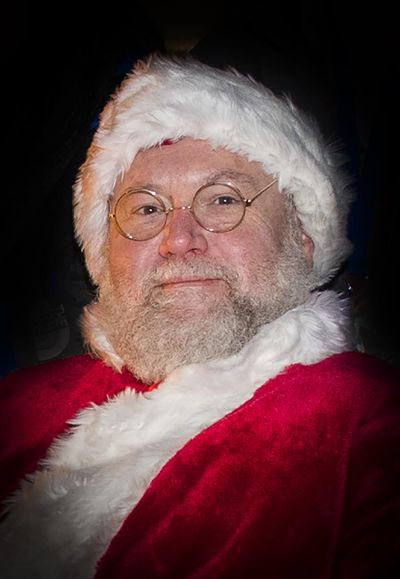This column reflects the opinion of the writer. Learn about the differences between a news story and an opinion column.
Shawn Vestal: We’re generous now, but will we be after the Christmas trees head to the curb?

When I was a child, my family had an annual tradition of being Secret Santas for another family.
On Christmas Eve, we would load boxes of gifts and food into a van, and head out into the night. In an idealized hindsight, I picture sparkling snowfall on fallen snow, mounds plowed to the roadside, roofs lined with fat, bright bulbs in primary colors.
In one box would be a turkey and potatoes, some rolls and cans of cranberry sauce. A meal not unlike the meal my family and I would enjoy ourselves the next day. In another would be toys and gifts: a toy car for a young boy, a particular book for a young girl, clothes for a mom…
I can vividly recall the human warmth of the van – it was us and another family, all limbs and runny noses and arguments and sticky candy canes – and the thrilling sense that we were staking out the house in question, waiting for our moment, doing something clandestine and sneaky and … what? Important?
Something that felt important. Elemental. Human beings sharing good fortune with other human beings. Like we were answering a call, opening our hand to our brother, lending to the Lord – living the values that were the constant refrain of the season, at least in my house and among my people.
We would sneak up to the door of the home, put down the boxes, ring the bell and run like hell back to the van, where we would drive off to our other Christmas Eve activities, feeling warmed by what we had done.
And then we wouldn’t do anything even remotely like that for another 12 months or so.
Today means many things to many of us, an array of rituals and activities that range from the sacred to the mundane. It is also the turning point in the annual cycle of giving for many of us: the moment when we stop, when the seasonal urgency that overcomes us fades. Having done a charitable thing or three over the past month – given to the Christmas Fund or bought food for Tom’s Turkey Drive or helped at the Union Gospel Mission’s Thanksgiving Meal or played Secret Santa for some lucky family – a lot of us will now take a break.
I know I will, unless I break a pattern of many years, and so I’m not trying to be a scold. We are a giving community in a giving nation. America is the second-most generous nation in the world (behind Myanmar!), according to the Charities Aid Foundation’s annual World Giving Index. More than 80 percent of Americans give to a charity each year, according to Blackbaud, a company that provides computer services and information to nonprofits.
And even within that context, the Inland Northwest is remarkable. A Forbes survey in 2014 ranked Idaho second and Washington eighth in the country for giving. An analysis by the website Wallet Hub found that Washingtonians are more likely than the national average to donate their time and effort to a cause; Idahoans are more likely than the national average to give money and time.
The Chronicle of Philanthropy uses tax data to break down charity at the county level. Both Spokane and Kootenai county are ahead of the national average on its “giving ratio” – a calculation of charitable giving as a portion of a county’s overall gross income.
The national ratio is right at 3 percent. Kootenai County’s giving ratio is 3.16 percent, and Spokane County’s is 3.18. Among the most heartening truths buried inside this data – and this is true nationally as well – is that people at the bottom of the income ladder are stalwart givers. The giving ratio among those earning $25,000 or less in Spokane County is 7.73 percent; in Kootenai County it’s 8.16 percent.
But within this pattern of generosity there are fluctuations. The seasonal surge is one of them – we are bombarded with calls for charity at this time of year, and we respond. Our giving is also influenced by our own individual well-being: the recession of 2008 took a bite out of charitable giving that has never recovered, according to a recent working paper by the National Bureau of Economic Research.
But need does not wax and wane with the holidays. It does not rise and fall with the stock market. I know this in part from statistics and in part from my own childhood Christmases. They were not all a picture of a fortunate family sharing its bounty with others; in some years, we were the receivers of generosity, warmed by the act of giving in a very different way.
Human beings sharing their good fortune with other human beings. It’s basic, it’s elemental, it’s important. There is no time of year in which our sense of this – our neighborliness, our capacity to be open-hearted and giving – is stronger.
What if it were strong enough to carry into January?
Shawn Vestal can be reached at (509) 459-5431 or shawnv@spokesman.com. Follow him on Twitter at @vestal13.
